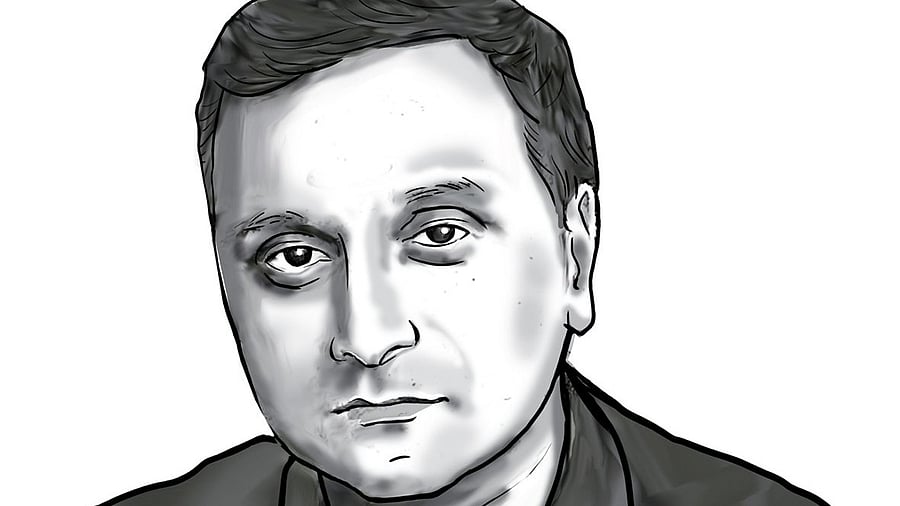
A few months ago, I found myself reading through Sangama (1956), a short fiction collection and the only book that Rajalakshmi N. Rao published. I was compiling stories for an anthology of Kannada short fiction in English translation and the lone woman writer among the Navya (modernist) Kannada writers, who I knew of but hadn’t ever read, elicited maximal curiosity.
The dozen stories in Sangama were astonishingly good. Their intense prose, high ambition and expansive world-awareness made them utterly special and unlike other stories I had read in Kannada or, for that matter, in any other Indian language. One of the stories, Ave Maria, sees the protagonist come to the brink of existential despair and overcome it through an epiphanic encounter with choir music during Easter. Another one, titled Scholar Gypsy, affirms the quiet heroism of lifting away from the compulsions of calculated life-choices and staying true to one’s creative instincts. A third one, Midas, is a brief sci-fi fable that points at the self-destructiveness inherent in an authoritarian figure. In yet another story, Kalyani, three youths convince themselves easily about the marital suitability of a girl, whereas she finds each one of their personalities limited and only partially fulfilling.
The story I picked and translated for the short fiction anthology, August 15, is among the most sophisticated and complex responses that I have seen to India’s independence. Through a young man’s visit to Bombay during the Independence Day anniversary celebrations and his return to a hovel that he shared with friends in a nearby township, the story moves across surreal and real moments and accumulates a range of images to stitch up an opaque predicament. In this ultimately life-affirming story that stays attentive to the minutiae of shifting moods, humans as well as inanimate things are feeling beings.
Older Kannada critics remembered Rajalakshmi N. Rao and even recalled a story or two of hers. Younger ones though tended to recognise her name without knowing any of her stories. This state of affairs is perhaps not wholly puzzling since she wrote only over a two-year period, in the mid-1950s, during her early twenties. She became a sanyasi soon afterwards and disappeared from the literary scene.
A couple of months ago, when I shared with a friend my joy at having read Rajalakshmi N. Rao, she mentioned that she lived in an ashram near Mysuru. She had, she added, moved there nearly thirty years ago. A well-known Kannada writer, who knew her whereabouts, shared her contact details: “Try this number. She rarely attends calls.” Luckily, she answered the phone when I called. Her voice was clear and firm. She was fine with my including her story in the Kannada anthology. She was fine with recording a conversation with me too.
The ashram turned out to be a small house, a small assembly hall and a small samadhi of her guru, Swami Atmanandendra Saraswati. Trees and plants were all around inside its low compound walls. Dressed in a white saree and a white blouse, the small-built, grey-haired writer and sanyasi welcomed us cheerfully. Passing the afternoon with her – a gracious, perceptive and spirited personality – proved a sheer delight.
Her early childhood was spent in the home of her grandfather, the famous Kannada literary figure B M Srikantaiah. Her high school and college were done through distance education since her father, a Garrison Engineer, was frequently transferred. Opting English literature, history and philosophy as her college subjects, she read widely and intensely at home. Virginia Woolf, D H Lawrence, Rosamond Lehmann and Elizabeth Bowen were among the writers she admired.
Looking inwards was a quality she didn’t often find among her contemporaries. Two modernist Kannada poets – Gopalakrishna Adiga (‘a father figure’) and Ramachandra Sharma (‘a family relation’) – were very supportive towards her writing. Following a brief period of marriage, she left her husband and a four-month-old daughter and became a sanyasi. Over the next forty years, she did half-yearly sojourns in ashrams in Uttarakashi and in Machilipatnam. She recited excitedly several of Kabir’s dohas in Hindi and broke them down for me in Kannada.
An understanding and overcoming of the self being her chief spiritual pursuit for most of her life, she isn’t attached to her stories. It was amazing to see however that she remembered so much of the context surrounding those stories. Rajalakshmi N. Rao wrote stories in English too. A few of her Kannada stories and all twelve of her English stories, which had gone uncollected thus far, will soon be published. An exciting intellectual occasion lies ahead, no doubt.